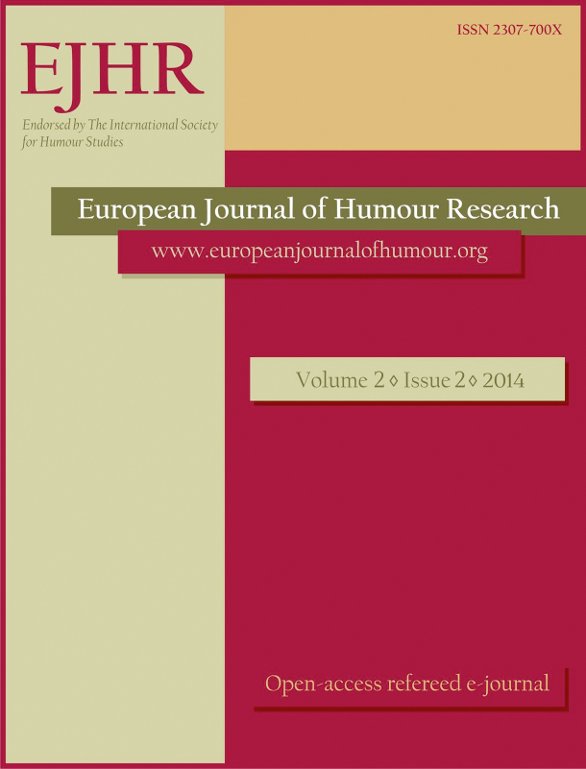Raised eyebrows as gestural triggers in humour:
Raised eyebrows as gestural triggers in humour:
The case of sarcasm and hyper-understanding
Author(s): Sabina Tabacaru, Maarten LemmensSubject(s): Social Sciences, Language and Literature Studies, Media studies, Theoretical Linguistics, Applied Linguistics, Communication studies, Pragmatics, Sociolinguistics
Published by: Krakowskie Towarzystwo Popularyzowania Wiedzy o Komunikacji Językowej Tertium
Keywords: Keywords: humour; cognitive linguistics; raised eyebrows; gestural triggers; gesture; discourse markers;
Summary/Abstract: The growing interest in humour within the field of Cognitive Linguistics during the past few years has led to the conclusion that humour exploits inferences through linguistic imagery and is highly creative. Following Yus (2003: 1299), we assume that humour uses discourse markers that allow the audience to see that what is being said should not be taken seriously. In this study, based on a large corpus of examples extracted from two American t elevision series ( House M.D. and The Big Bang Theory ), we add a yet unexplored multimodal perspective that of facial expressions accompanying humorous utterances, particularly pertaining to sarcasm and hyper understanding. More specifically, we present a qualitative and quantitative analysis of raised eyebrows used in interactional humour, arguing that they play a role in switching the context to a humorous interpretation. Our study analy ses humorous utterances against the background of Clark’s layering m odel and Fauconnier’s mental spaces theory. We illustrate how raised eyebrows function as “gestural triggers” allowing the hearer to make the connection between explicature (i.e. what is explicitly communicated by an utterance; cf. Carston 2002, 2004) and implicature ( i.e. assumptions that are not explicit and that the hearer has to infer from the contextual environment cf. Grice 1989). As such, we show that raised eyebrows play an important role in the understanding of the humorous message because they gu ide the hearer to interpret utterances in a humorous way and they contribute to meaning construction.
Journal: The European Journal of Humour Research
- Issue Year: 2/2014
- Issue No: 2
- Page Range: 11-31
- Page Count: 21
- Language: English

